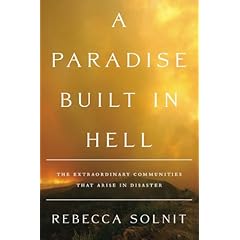 In Time magazine, China historian Jeffrey Wasserstrom discusses new writing about China in Big China Books: Enough of the Big Picture. He praises Peter Hessler‘s new book Country Driving, as an example of grounded scholarly reporting. Hessler’s previous book, Oracle Bones, was one of my favourite books of the past few years, so I am looking forward to his new book. Wasserstrom writes:
In Time magazine, China historian Jeffrey Wasserstrom discusses new writing about China in Big China Books: Enough of the Big Picture. He praises Peter Hessler‘s new book Country Driving, as an example of grounded scholarly reporting. Hessler’s previous book, Oracle Bones, was one of my favourite books of the past few years, so I am looking forward to his new book. Wasserstrom writes:
Big China Books vary greatly in quality, but even the best leave me cold due to their bird’s-eye view of the P.R.C. Adopting an Olympian perspective, their authors tend to use broad strokes to portray things that actually require a fine-grained touch. …
Fortunately, Big China Books are not the only option for general readers curious about the P.R.C., since many significant works that take a ground-level view of the country, rather than a bird’s-eye one, have also been appearing. I am thinking, for example, of Fast Boat to China (2007). This is a lively account of the human side of Shanghai-based outsourcing by Andrew Ross, who usefully dubs his study a foray into “scholarly reporting” — a term for books that, as he puts it, have “mined the overlap between ethnography and journalism.”
Noteworthy examples have appeared throughout the past decade, but the richest year for them was probably 2008. Two of the most illuminating works published then were Leslie T. Chang’s Factory Girls, which provided a moving account of migrant workers that was wonderfully sensitive to divides rooted in location, gender and generation, and Michael Meyer’s The Last Days of Old Beijing, which offered a poignant look at breakneck development. (See portraits of Chinese workers.)
… Will admirable works of scholarly reporting also keep coming out? I’m even more confident answering this question affirmatively. One such work, Country Driving: A Journey Through China from Farm to Factory, is being published in February, and it’s the best yet from Peter Hessler, whose two earlier books, River Town (2001) and Oracle Bones (2006), were exemplary forays into the genre. Country Driving begins with the author recounting his quixotic efforts to follow the Great Wall by car, depending on flawed maps that sometimes left large sections blank (for political reasons) and often seemed hopelessly out of date right after being issued (due to how fast new thoroughfares are being built). The next section describes Hessler’s experiences living in a north China village that is transformed by the construction of a new road that links it to Beijing. The book concludes with a look at the economic dynamics of “instant cities” that keep springing up along a highway south of the Yangtze River. (Read “China Takes on the World.”)I haven’t been to the places Hessler describes in Country Driving or met the people whose stories he tells with his characteristic blend of empathy, insight and self-deprecating humor. Yet I never doubt for a second that he’s writing about the richly hued and socially variegated country that I know, as opposed to one of the imaginary lands conjured up in Big China Books.
Country Driving won’t satisfy those who like answers to Big Questions that can fit on dust jackets. Still, it captures beautifully the rhythms of life in a nation that is being turned inside out so quickly that it is not just lone American writers, but also Chinese from varied walks of life, who often find themselves struggling to traverse uncharted territory, armed only with their wits and with maps that become obsolete as soon as they are printed.
 Jeffrey Wasserstrom follows up his article on the China Beat blog. There he follows up his Time article with Six takes on Martin Jacques, which points to 6 contrasting reviews of Martin Jacques’ When China Rules the World, a recent book that looks at global rise of China:
Jeffrey Wasserstrom follows up his article on the China Beat blog. There he follows up his Time article with Six takes on Martin Jacques, which points to 6 contrasting reviews of Martin Jacques’ When China Rules the World, a recent book that looks at global rise of China:
My goal in this spin-off to the Time piece is not to offer an expanded version of my own thoughts on [When China Rules the World by Martin Jacques], but rather to direct the attention of interested readers to six recent essays by other people that engaged with the thesis of When China Rules the World. Between them, this sextet of reviews and opinion pieces provides, I think, a good sense of both the range of positions staked out in the debate generated by 2009’s most talked about Big China Book, and a sense of some of the ways that writers, including Jacques himself, have taken to claiming that each new event can be used to either prove or undermine its claims. …






